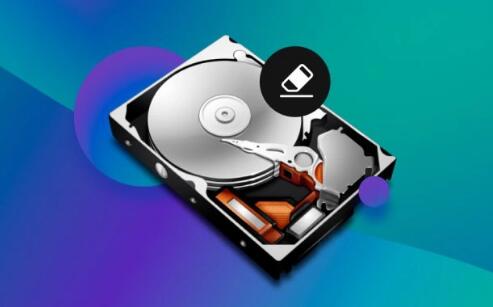Data recovery from a Hard Disk Drive (HDD) involves various processes to retrieve lost or corrupted data. Here’s a detailed overview of how HDD data recovery works:
1. Understanding HDDs
Hard Disk Drives are a type of storage device that uses spinning disks (platters) coated with magnetic material to store data. Data is written to and read from these disks by read/write heads that float just above the platters. The HDD’s mechanical and magnetic properties make it susceptible to various types of failures and data loss.
2. Causes of Data Loss
Before diving into recovery techniques, it’s important to understand common causes of data loss:
Physical Damage: Mechanical failures, such as head crashes or platter damage, can result in data loss.
Logical Failures: Issues like file system corruption or accidental deletion.
Human Error: Accidental formatting or deletion of files.
Software Issues: Corruption due to software malfunctions or malware.
Electrical Failures: Power surges or failures that affect the HDD’s functionality.

3. Initial Diagnosis
The first step in data recovery is to diagnose the problem:
Symptom Check: Listen for unusual noises like clicking or grinding, which indicate physical damage. If the drive is not recognized, it might be a logical issue or a connectivity problem.
Connection Test: Verify that cables and connections are secure and undamaged.
System Check: Ensure that the problem isn’t with the operating system or hardware interfaces.
4. Data Recovery Methods
4.1. Logical Recovery
For issues like file system corruption or accidental deletion, logical recovery techniques are used:
File System Repair: Tools like CHKDSK (Check Disk) or other file system repair utilities can fix logical errors.
Data Recovery Software: Specialized programs can scan the drive for recoverable files. These tools work by searching for file signatures or metadata remnants in the drive’s sectors.
Manual Recovery: In some cases, data can be manually retrieved by examining disk sectors and using low-level file recovery tools.
4.2. Physical Recovery
For physical damage or severe mechanical failures, physical recovery techniques are employed:
Cleanroom Recovery: When the platters or read/write heads are physically damaged, the drive may need to be opened in a cleanroom environment to avoid contamination. This is done to replace or repair damaged components.
Component Replacement: In some cases, replacing faulty components like the PCB (Printed Circuit Board) or read/write heads can restore functionality. This often involves using donor drives with matching specifications.
Platter Transfer: In severe cases, platters may be transferred from the damaged drive to a working one. This is a complex procedure requiring precision to avoid further data loss.
5. Data Recovery Process
5.1. Preparation
Clone the Drive: Before starting the recovery process, create a bit-by-bit clone of the damaged drive. This ensures that any recovery operations are performed on the clone, preserving the original drive’s condition.
Analyze the Clone: Use recovery tools on the cloned drive to analyze the extent of data loss and determine the best recovery approach.
5.2. Software Recovery
Scan for Lost Files: Data recovery software scans the drive for lost or deleted files, identifying recoverable data based on file signatures and metadata.
File Restoration: Once the files are identified, they are recovered and restored to a separate storage medium.
5.3. Physical Recovery
Disassemble the Drive: If physical damage is suspected, the drive may be disassembled in a cleanroom environment to replace or repair components.
Data Extraction: Extract data from the repaired or donor drive and transfer it to a new storage medium.
6. Post-Recovery Steps
Verify Data Integrity: After recovery, verify that the retrieved data is complete and intact.
Backup Data: To prevent future data loss, create backups of the recovered data on reliable storage systems.
7. Preventive Measures
To minimize the risk of data loss in the future:
Regular Backups: Implement a robust backup strategy that includes regular backups to multiple locations.
Data Monitoring: Use tools to monitor the health of your HDD and detect issues early.
Safe Handling: Avoid physical damage by handling drives carefully and ensuring proper ventilation.
8. Professional vs. DIY Recovery
While some data recovery tasks can be performed using software tools, others require professional assistance, especially when dealing with physical damage. Professional data recovery services have specialized equipment and expertise to handle complex cases, often achieving higher success rates.
HDD data recovery is a multifaceted process that involves understanding the nature of data loss, diagnosing the problem, and applying appropriate recovery techniques. Whether dealing with logical issues or physical damage, the goal is to restore lost or inaccessible data while minimizing further risks. Regular backups and preventive measures are crucial for protecting data against loss and ensuring the reliability of storage systems.
About us and this blog
Panda Assistant is built on the latest data recovery algorithms, ensuring that no file is too damaged, too lost, or too corrupted to be recovered.
Request a free quote
We believe that data recovery shouldn’t be a daunting task. That’s why we’ve designed Panda Assistant to be as easy to use as it is powerful. With a few clicks, you can initiate a scan, preview recoverable files, and restore your data all within a matter of minutes.
Subscribe to our newsletter!
More from our blog
See all postsRecent Posts
- What does unsupported file format mean? 2025-04-07
- What file format does cricut use? 2025-04-07
- What file format do 3d printers use? 2025-04-07










